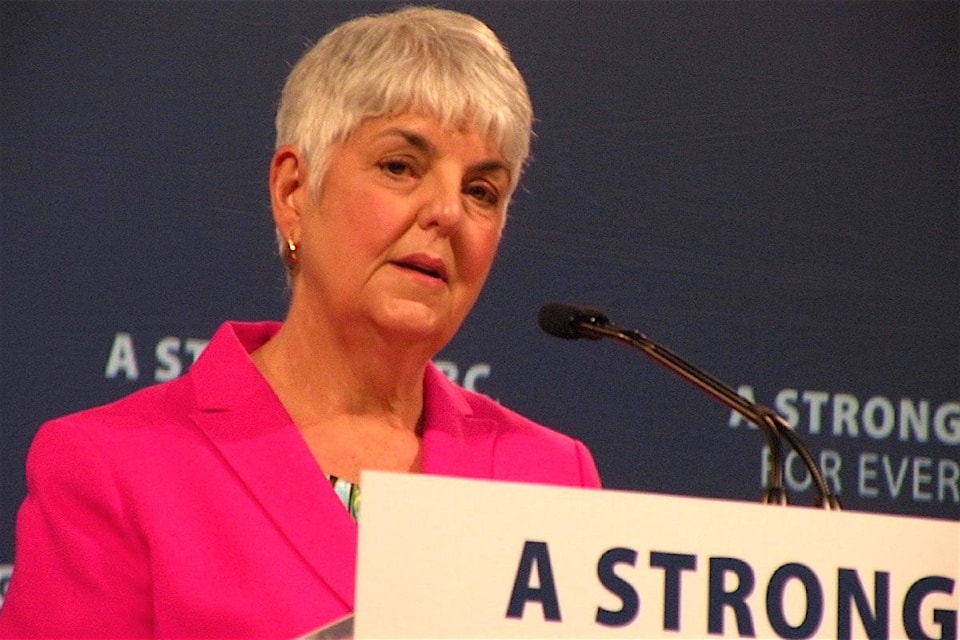May employment statistics represent “a glimmer of hope” after B.C.’s economy lost 353,000 jobs in the coronavirus pandemic restrictions of March and April, Finance Minister Carole James says.
The latest Statistics Canada labour force survey reports an additional 43,300 jobs for May. B.C.’s official unemployment rate actually rose almost two per cent to 13.4 per cent, but that’s a result of more people returning to look for work as the job market started to show signs of reopening.
“These numbers came before the restart had actually begun,” James said June 5. “I think we see some glimmers of hope in this trend when you see the number of jobs that actually were created. It doesn’t touch the huge loss of jobs over this time period, but I think it does show that you’re starting to see some confidence.”
Jock Finlayson, chief policy officer of the Business Council of B.C., said he was pleasantly surprised to see a slight improvement rather than further decline of B.C.’s job market.
“I think April was the bottom of the labour market apocalypse,” Finlayson said in an interview. “And we’re now back on the road to what I think will be a fairly lengthy and bumpy recovery.”
RELATED: Closed B.C. businesses allowed to sell liquor stock
RELATED: No regional easing of B.C. restrictions, Horgan says
James said the unemployment rate among young people was 20.89 per cent for the May report, reflecting the categories of accommodation, food services, wholesale and retail that account for 46 per cent of total jobs lost in B.C.
Finlayson said the job market for young people is likely to remain difficult, in an unprecedented recession that has hit the service economy much harder than the goods-producing sector.
“That’s one of the things we’re worried about, how long is it going to take young adults to get re-employed, recognizing that there will be more people coming out of school into the labour force as well,” Finlayson said. “They’re going to be out there bumping up against their slightly older brothers and sisters who have been rendered unemployed as a consequence of the pandemic and the closure of all these industries.”
Another factor is the Canada Emergency Response Benefit (CERB), which arrived much faster than federal business wage subsidies. Finlayson said it’s an issue in getting people back into the job market, and the program needs to be phased out by late summer and fall.
“Some people said extend it to the end of the year,” Finlayson said. “I think that would potentially have some quite negative unintended consequences.
“There’s a lot of research that shows the most important indicator of long-term economic and social well-being is employment. They’re better to be employed building their skills and their experience, and contributing to the economy.”
@tomfletcherbc
tfletcher@blackpress.ca
Like us on Facebook and follow us on Twitter.
